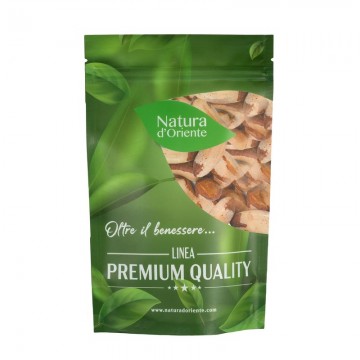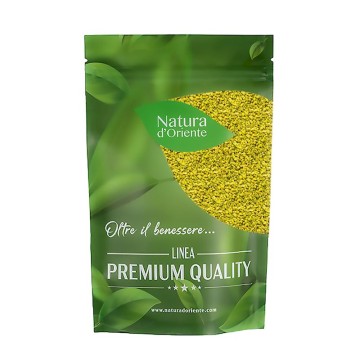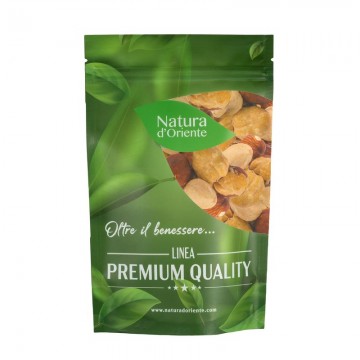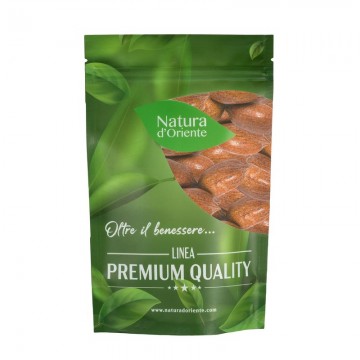Pine nuts are a very energetic food, particularly suitable for the diet of sportsmen and active people. of the many benefits.
Shelled pine nuts properties and benefits
Many fats but above all unsaturated, many vitamins (in particular B1 and B3), many mineral salts . Therefore, pine nuts are excellent as an energy snack and eaten regularly but in moderation are healthy for the heart and arteries because they lower low-density cholesterol (the "bad" one) and raise high-density cholesterol.
Nutritional values of pine nuts
In the canonical 100 grams of product in pine nuts almost 70 are fat, but of these only a little less than 5 are saturated fats (the most harmful). The energy intake is really important: 673 kilocalories, but who consumes 100 grams of pine nuts all together? Among the vitamins, 0.4 mg of Thiamine (B1) and 4.4 mg of Niacin (B3) stand out, respectively equal to 35% and 29% of the daily requirement. But also 9.3 mg of vitamin E. Among the minerals, 251 mg of magnesium and 575 mg of phosphorus stand out, representing 71% 82% of the daily requirement. But also the content of manganese (8.8 mg), potassium (597 mg) and iron (5.5 mg) is very respectable.
History and cultivation
Pine nuts are the edible seeds of about twenty species of pine, all of them are technically edible, but some are so small that they are not really used in food, let alone those species of pine are grown for this purpose. The pinus genus evolved about 200 million years ago and is widely distributed throughout the northern hemisphere, under the equator the only species that you naturally needed was the Sumatran pine.
Some species have been introduced in subtropical and temperate regions of both hemispheres for wood or for ornamental purposes and this has created some problems because pine spreads quite easily by becoming a weed. The Italian pine or Mediterranean pine, the most widespread in Europe, introduced in all the countries of the Mediterranean basin, has been used and cultivated for edible seeds since prehistoric times.
In addition to food purposes, this tree is also very popular as an ornamental plant for parks and gardens, for this purpose it was introduced in California in the last century. Pinus pinea known as Italian stone pine is widely grown from Hollywood to Santa Monica and throughout the San Fernando Valley. In Italy and Greece, pine forests are widespread in coastal areas. In reality, the pine is not cultivated for food reasons, on the one hand the forests are so extensive that the harvest can be done from natural forests, on the other hand it is a plant that once planted requires decades before making it from a food point of view. , a cost that would be added to that of labor which is high because it is a complex process. The major producers of pine nuts of the Italian (or Mediterranean) pine species are Italy, Turkey, Spain and Portugal. Pine, on the other hand, is grown for the timber industry.
Plant and fruit
The pinus pinea what we call stone pine and the English stone pine or Italian stone pine is one of the 126 species of pine, from a commercial food point of view it is one of the most important. The typical height is between 12 and 20 meters, but can exceed 25. The appearance of the crown changes with the age of the plant, in youth it is a dense globe, in middle age it has an umbrella-like crown on a large trunk ( it is no coincidence that one of the English names is umbrella pine) and in advanced maturity the crown becomes a crown that widens a lot (even exceeds 8 meters in width) and flattens. Pine cones are among the largest (compared to those of other pine species), 8 to 15 cm long and require a full 36 months to mature, more than any other species. The pine nuts (which we remember are edible seeds not fruits) thanks to this are among the largest and most valuable.
Pine nuts in the diet
As mentioned in the paragraph on properties and benefits, consuming pine nuts in moderate but regular quantities seems to reduce the risk of heart problems. But how much and how many times? As a ration it is recommended not to exceed 30 grams (the texts with Anglo-Saxon measures speak of an ounce which is equal to 28.35 grams), consume three of these portions per weekit would benefit the heart, to eat one a day even more. Other benefits of pine nuts in the diet relate to diabetes, they would prevent or help control it because they stabilize blood sugar levels.
Use unjustified pine nuts in the kitchen
Pine nuts thanks to their sweet taste are used in a variety of recipes and preparations from dolse to salty , passing through sauces, are among the ingredients bases of the famous Genoese pesto. They are also widely used in delicious salads, excellent for tasty vegetarian and vegan dishes. We chose a salad.
Fennel and orange salad
Ingredients
- Fennel 840 gr
- Oranges 2
- Pine nuts 50 gr
- Raisins 20 gr
- Salt to taste
- Extra virgin olive oil 50 gr
- Apple vinegar 3 gr
- Pumpkin seeds 8 gr
Preparation
1) Squeeze one of the oranges and use the juice to soak the raisins (let it soak for at least 10 minutes)
2) Peel the other orange and remove the two ends (remove the white part of the peel which is bitter).
3) Cut it into very thin slices and set aside
4) Wash and dry the fennel. Place it on a cutting board and remove the stems and green beards with a clean cut. Also deprive it of the base and the hardest and most woody outer leaves. Then cut the heart into a very thin julienne.
5) Transfer it to a bowl with acidulated water (for acidulated water we mean water made slightly acidic with a few drops of lemon or vinegar, it slows down the oxidation of vegetables) to preserve the color until use.
6) Pour the pine nuts into a non-stick pan and toast them for a few minutes: keep them aside to cool down.
7) Drain the raisins and set them aside, while the juice is combined with the vinegar in a container with high sides.
8) Add the oil and season with salt: blend all the ingredients with an immersion mixer until you obtain a homogeneous emulsion.
9) Drain the fennel and pour them into a large bowl and add the raisins.
10) Add the oranges.
11) Flavor with the emulsion and pine nuts.
12) Pour the pumpkin seeds to give a crunchy note and mix everything well.
Recipe source: Giallo Zafferano


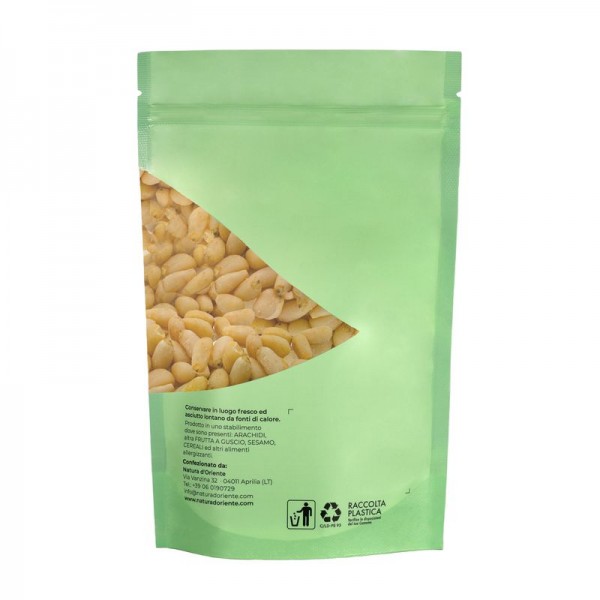










 No reward points for this product.
No reward points for this product.







